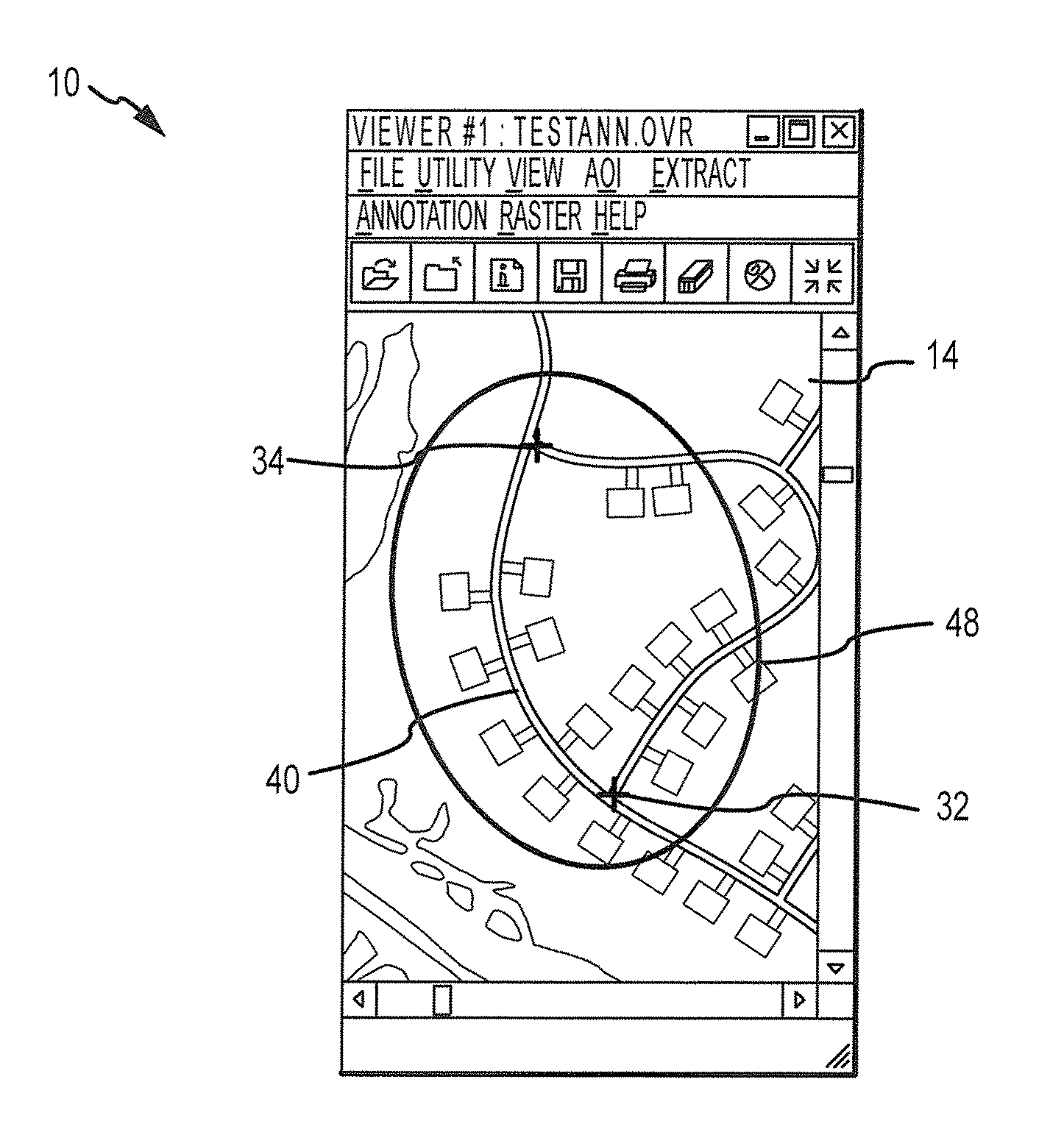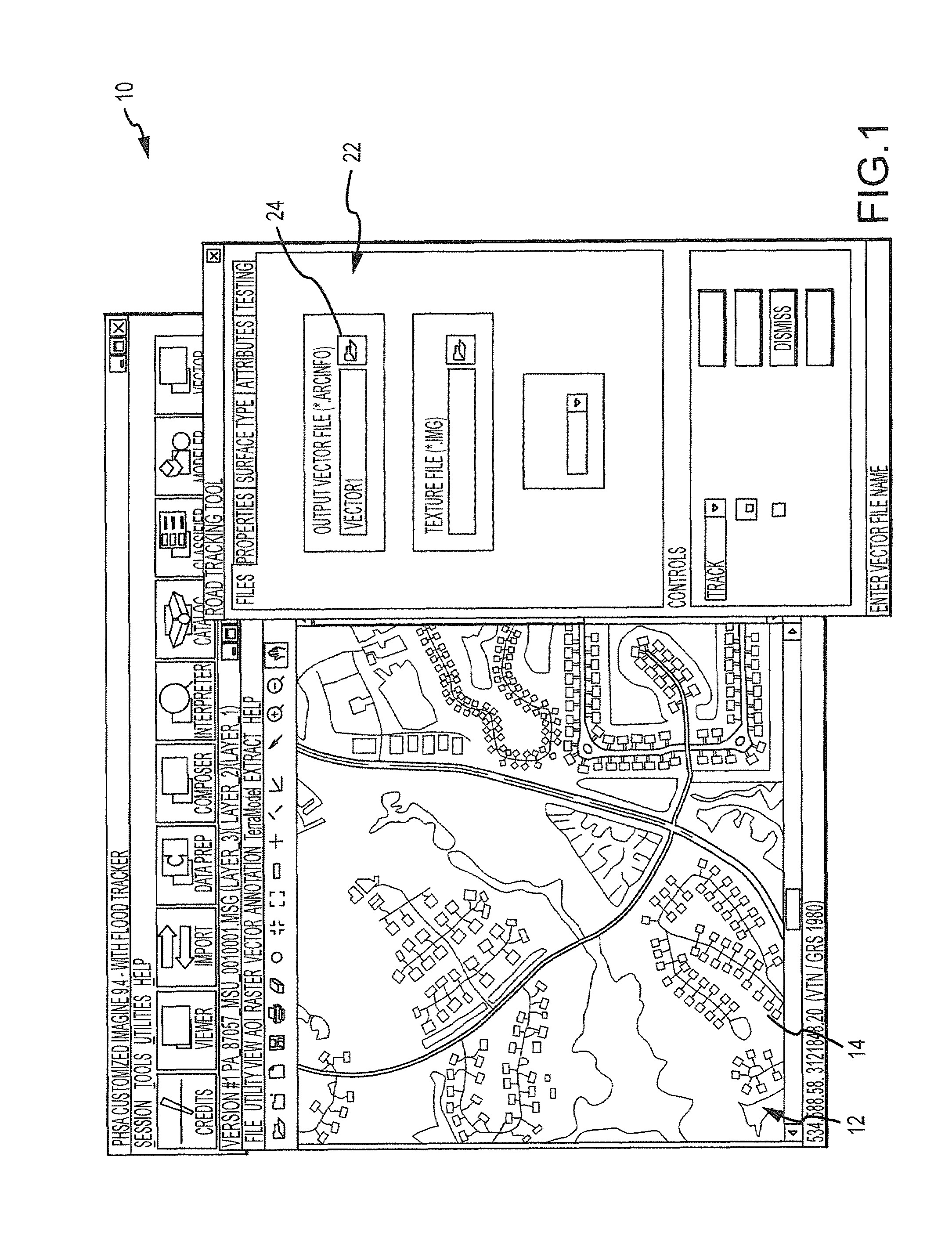Semi-automatic extraction of linear features from image data
- Summary
- Abstract
- Description
- Claims
- Application Information
AI Technical Summary
Problems solved by technology
Method used
Image
Examples
Embodiment Construction
[0096]Broadly described, a method 10 of the present invention comprises extracting at least one linear feature from remotely-sensed imagery. As used herein, “remotely-sensed imagery” is satellite or aerial imagery of a geographic location that measures reflected or emitted radiation in spectral bands ranging from ultraviolet to infrared on the electromagnetic spectrum, and maintains spatial data in a raster GIS format. A “multispectral image” is an image collected in multiple bands ranging from ultraviolet to infrared. A “panchromatic image” is an image collected in the broad visual wavelength range (plus near-infrared) but rendered in black and white. As used herein, “radar imagery” is imagery produced by illuminating a geographic area with microwaves and measuring and recording the strength and travel time of the received signals or the transmitted and received signals. Radar imagery includes but is not limited to imagery produced from real aperture and synthetic aperture radar (S...
PUM
 Login to View More
Login to View More Abstract
Description
Claims
Application Information
 Login to View More
Login to View More - R&D
- Intellectual Property
- Life Sciences
- Materials
- Tech Scout
- Unparalleled Data Quality
- Higher Quality Content
- 60% Fewer Hallucinations
Browse by: Latest US Patents, China's latest patents, Technical Efficacy Thesaurus, Application Domain, Technology Topic, Popular Technical Reports.
© 2025 PatSnap. All rights reserved.Legal|Privacy policy|Modern Slavery Act Transparency Statement|Sitemap|About US| Contact US: help@patsnap.com



